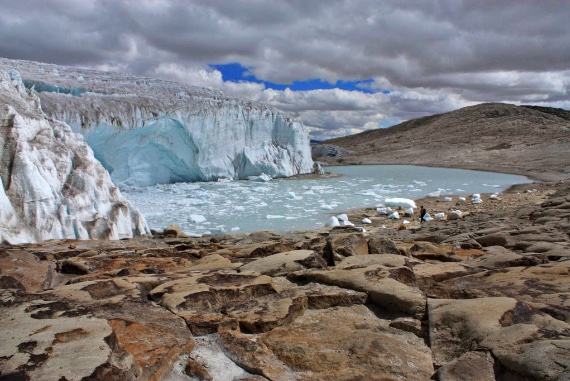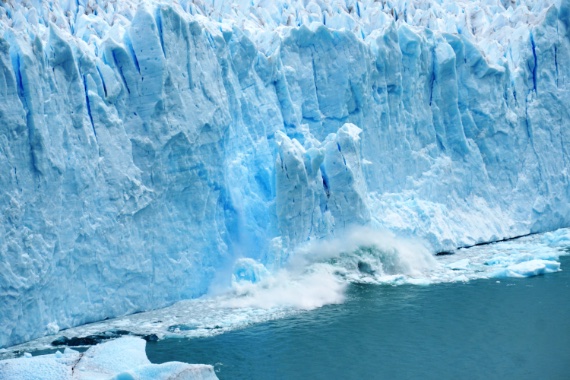When University of Salford (UK) glaciologist Neil Entwistle arrived in Switzerland in the summer of 2022, as he had been doing for 19 years, he was devastated by what he saw. As he recounted in an article in The Conversation, the resort of Zermatt, at the foot of the mythical Matterhorn, had cancelled its summer skiing for the first time ever. Mont Blanc was closed to climbers, along with the rest of the high alpine routes, because of landslides due to melting permafrost. But the worst part of a particularly hot summer was borne by the glaciers, with ice loss in 2022 smashing previous records.
In September, the Swiss Academy of Sciences (SCNAT) confirmed what glaciologists like Entwistle had already observed first hand: 2022 was a disastrous year for alpine glaciers, with an ice loss of 3 cubic kilometres, or 6.2% of the total mass. Until now, glaciologists considered years with a loss of more than 2% to be extreme. But in 2022, according to Entwistle, “the scale of change is staggering.”
Climate change is behind this disaster, of course. But it is not just the heat of the summer, with waves of record temperatures in many parts of Europe: the previous winter’s snowfall was low, which did not provide sufficient cover to protect the ice masses from the Sun’s radiation. This was compounded by an influx of Saharan dust in the spring that painted the snowy mountain slopes an unusual orange colour, which reduced the reflection of the Sun’s energy, causing an increase in snowmelt.
According to SCNAT, small glaciers were the most affected. Some, such as those of Pizol, Vadret dal Corvatsch and Schwarzbachfirn, have virtually disappeared. But overall the loss has averaged about 3 metres in thickness, in some places reaching more than 6 metres even at altitudes of 3,000 metres, double the maximum values of other years. The ice melt has been so brutal, notes SCNAT, that in July and August alone the amount of water released would have been enough to fill all the reservoirs in the Swiss Alps from scratch.
An unprecedented recession
According to the first instalment of the 6th Assessment Report of the UN Intergovernmental Panel on Climate Change (IPCC), published in 2021, glacier ice loss has been the norm at least since the late 19th century, but the rate is only increasing: between 1971 and 2019, an average of 170 gigatonnes of ice was lost annually, but the average from 1993 to 2019 was 210 gigatonnes per year, rising to 240 if only the period from 2006 to 2019 is considered. According to the World Glacier Monitoring Service, a collaboration of several institutions with the participation of the United Nations, the almost fifty reference glaciers around the world have lost an average of 20 metres in thickness since 1980, and by 2022 the loss has almost tripled compared to 2020.

“During the decade 2010–2019, glaciers lost more mass than in any other decade since the beginning of the observational record,” the IPCC concludes, adding that the glacier recession at the start of this century is unprecedented in the last 2,000 years. The regions of the world most affected over the past 20 years have been the southern Andes, New Zealand, Alaska, central Europe and Iceland, while losses have been relatively smaller in the mountains of Asia, the Russian Arctic and the periphery of Antarctica. Only a few glaciers in the world have managed to maintain or even slightly increase their mass since the 1970s, notably in the Karakoram range—between Pakistan, India and China—although models predict that this anomaly is unlikely to last long.
The predictions of these models are dire for the future of land-based glaciers: by 2100, more than 80% of the ice in Europe, the Caucasus, western Canada and the USA, northern Asia, Scandinavia and New Zealand will have disappeared, along with the remaining ice in tropical regions.
The drama of the Pyrenean glaciers
The situation is particularly dramatic in the Pyrenees. According to the European Federation of Geologists, in 1850 the mountain range that separates Spain, Andorra and France was home to 52 glaciers; between then and 2016, 88% of the ice surface was lost. In 2021, a study by the Spanish National Research Council revealed that, of the 24 glaciers that still survived in 2011, three of them have practically disappeared. In this last decade, the total glacierised area has shrunk by 23% and the average ice thickness has dropped by more than 6 metres, although some have lost up to 20 metres. “This indicates the continuous decline of Pyrenean glaciers towards an ice-free mountain range in the coming decades,” the authors wrote.

As study co-author Jesús Revuelto told the American Geophysical Union, the loss of Pyrenean glaciers means the destruction of a heritage that belongs to everyone, as well as turning ice that preserved valuable samples of the past climate and ecosystems into water. UNESCO has also warned, in a report published in November 2022, that by 2050 a third of the 50 World Heritage sites that are home to glaciers will have lost all or a large portion of them, including the disappearance of the last remaining ones in Africa—on Kilimanjaro and Mount Kenya—on Mount Perdido in the Pyrenees, in the Dolomites in Italy and in the national parks of Yellowstone and Yosemite in the USA.
But the consequences of this phenomenon on a global scale are much more profound. According to the IPCC, between 1961 and 2016, the melting of glaciers raised sea levels by 27 millimetres. One study estimates that glaciers are responsible for 21% of sea level rise this century. Models compiled by the IPCC estimate that by 2100 the rise will be between 0.1 and 0.2 metres, with a greater contribution from the Arctic and Antarctic regions, which have a larger area of ice. This trend will continue after the turn of the century, but in the shorter term, scientists are especially concerned about the immense Antarctic Thwaites Glacier, the size of Florida; a 2022 study estimates that the total loss of the glacier and adjacent icy basins could raise sea levels by 1 to 3 metres. Added to this are the risks of flooding and landslides, and a future shortage of drinking water in the affected regions. On top of this, scientists warn that melting ice could release trapped microbes with epidemic potential.
Javier Yanes
Comments on this publication